Page 57 of 145

6. Check that the oil pressure warning light has turnedoff.
7. Release the parking brake.
To start the engine if the transmission is faulty, the
“Delayed startup” procedure may be required.
NOTE: Not all Transmission Failures requires the “De-
layed startup” Procedure, it depends on the type of
failure.
(refer to �Instrument Cluster Messages� under�Auto-
mated Manual Transmission� in this section for further
information):
• Begin with the key in the OFF position.
• Press and hold the brake pedal. •
Turn the key to the START/AVV position and hold it
there for at least seven seconds with the brake de-
pressed. The engine will start, and the transmission
will operate in recovery mode (maximum gear permit-
ted = 3rd, automatic mode not available). If the engine
does not start, contact your authorized dealer.
Starting Fluids
The engine is equipped with a glow plug preheating
system. If the instructions in this manual are followed,
the engine should start in all conditions and no type of
starting fluid should be used.
WARNING!
• Do not leave children or animals inside parked
vehicles in hot weather. Interior heat build up may
cause serious injury or death.
(Continued)
5
STARTING AND OPERATING 55
Page 58 of 145
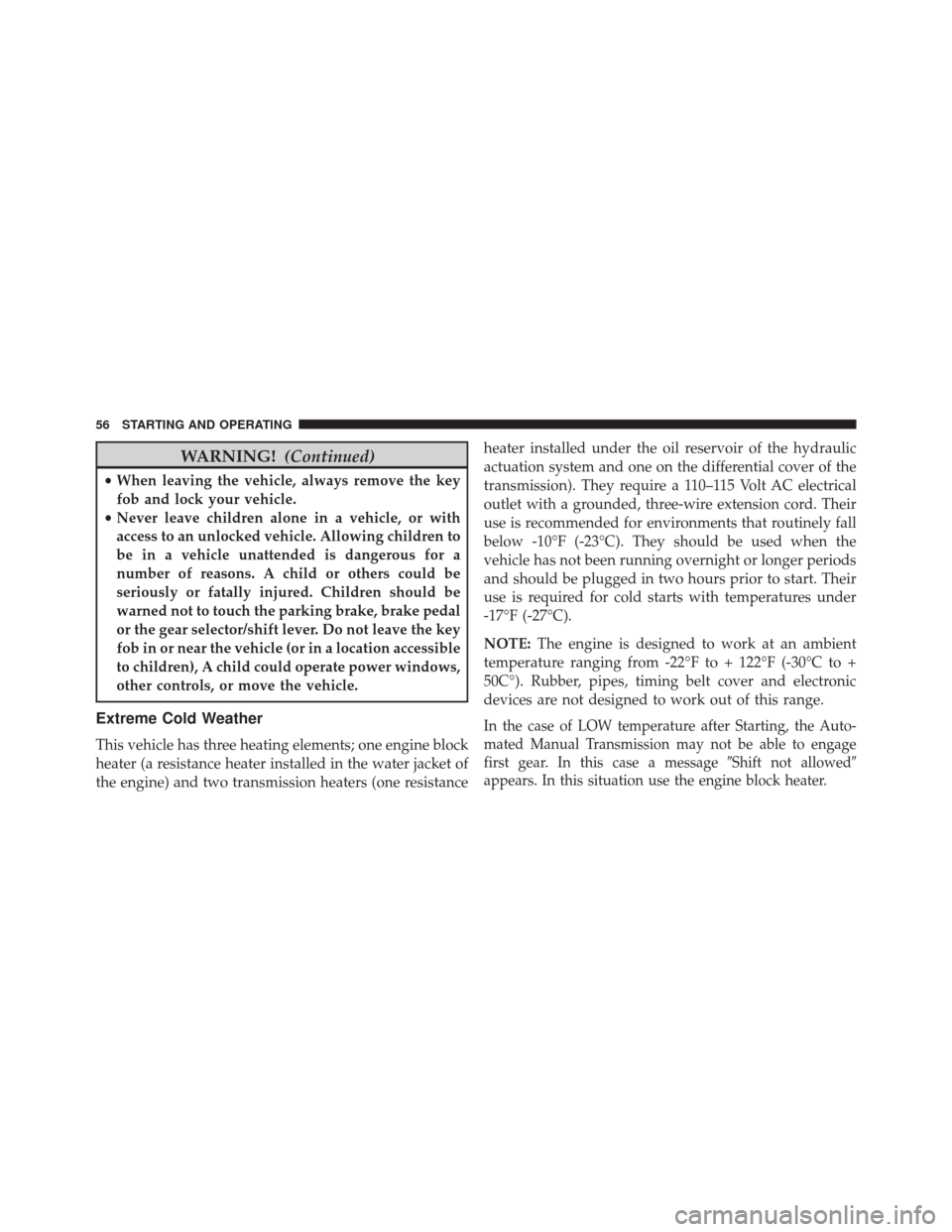
WARNING!(Continued)
•When leaving the vehicle, always remove the key
fob and lock your vehicle.
• Never leave children alone in a vehicle, or with
access to an unlocked vehicle. Allowing children to
be in a vehicle unattended is dangerous for a
number of reasons. A child or others could be
seriously or fatally injured. Children should be
warned not to touch the parking brake, brake pedal
or the gear selector/shift lever. Do not leave the key
fob in or near the vehicle (or in a location accessible
to children), A child could operate power windows,
other controls, or move the vehicle.
Extreme Cold Weather
This vehicle has three heating elements; one engine block
heater (a resistance heater installed in the water jacket of
the engine) and two transmission heaters (one resistance heater installed under the oil reservoir of the hydraulic
actuation system and one on the differential cover of the
transmission). They require a 110–115 Volt AC electrical
outlet with a grounded, three-wire extension cord. Their
use is recommended for environments that routinely fall
below -10°F (-23°C). They should be used when the
vehicle has not been running overnight or longer periods
and should be plugged in two hours prior to start. Their
use is required for cold starts with temperatures under
-17°F (-27°C).
NOTE:
The engine is designed to work at an ambient
temperature ranging from -22°F to + 122°F (-30°C to +
50C°). Rubber, pipes, timing belt cover and electronic
devices are not designed to work out of this range.
In the case of LOW temperature after Starting, the Auto-
mated Manual Transmission may not be able to engage
first gear. In this case a message �Shift not allowed�
appears. In this situation use the engine block heater.
56 STARTING AND OPERATING
Page 59 of 145

NOTE:The engine and transmission block heater cord is
a factory installed option. If your vehicle is not equipped,
heater cords are available from your authorized MOPAR
dealer.
• A 12 Volt heater built into the fuel filter housing aids in
preventing fuel gelling. It is controlled by a built-in
thermostat.
• A Diesel Pre-Heat system both improves engine start-
ing and reduces the amount of white smoke generated
by a warming engine.
NORMAL OPERATION
Observe the following when the diesel engine is operating.
• All message center lights are off.
• Malfunction Indicator Light (MIL) is off.
• Generic Warning Light is off.
• Engine Oil Pressure telltale is not illuminated.
Cold Weather Precautions
Operation in ambient temperature below 32°F (0°C) may
require special considerations. The following charts sug-
gest these options:
Fuel Operating Range
NOTE: Use “Ultra Low Sulfur Diesel Fuels” ONLY.
*No. 1 Ultra Low Sulfur Diesel Fuel should only be used
where extended arctic conditions (-10°F/-23°C) exist.
Fuel Operating Range Chart
5
STARTING AND OPERATING 57
Page 60 of 145
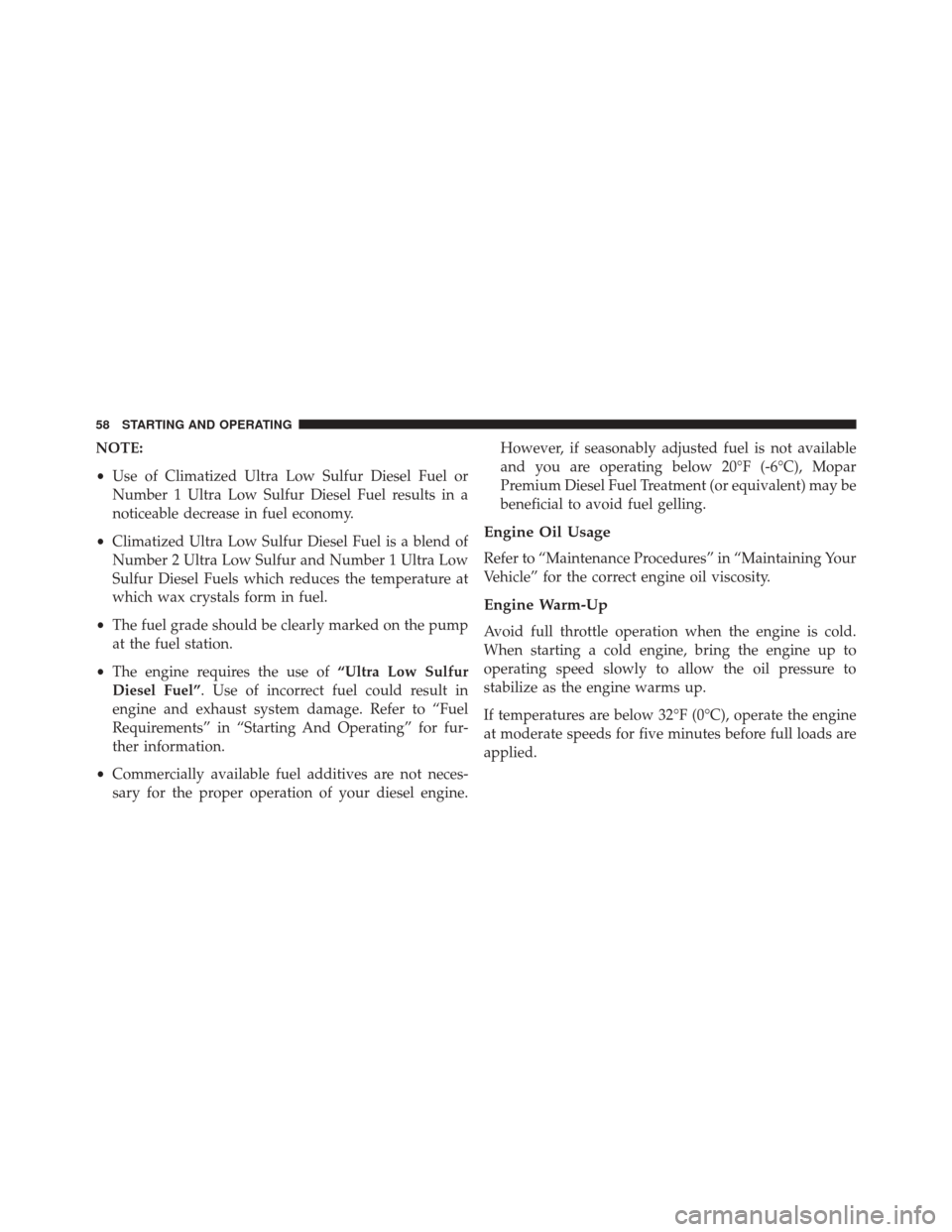
NOTE:
•Use of Climatized Ultra Low Sulfur Diesel Fuel or
Number 1 Ultra Low Sulfur Diesel Fuel results in a
noticeable decrease in fuel economy.
• Climatized Ultra Low Sulfur Diesel Fuel is a blend of
Number 2 Ultra Low Sulfur and Number 1 Ultra Low
Sulfur Diesel Fuels which reduces the temperature at
which wax crystals form in fuel.
• The fuel grade should be clearly marked on the pump
at the fuel station.
• The engine requires the use of “Ultra Low Sulfur
Diesel Fuel”. Use of incorrect fuel could result in
engine and exhaust system damage. Refer to “Fuel
Requirements” in “Starting And Operating” for fur-
ther information.
• Commercially available fuel additives are not neces-
sary for the proper operation of your diesel engine. However, if seasonably adjusted fuel is not available
and you are operating below 20°F (-6°C), Mopar
Premium Diesel Fuel Treatment (or equivalent) may be
beneficial to avoid fuel gelling.
Engine Oil Usage
Refer to “Maintenance Procedures” in “Maintaining Your
Vehicle” for the correct engine oil viscosity.
Engine Warm-Up
Avoid full throttle operation when the engine is cold.
When starting a cold engine, bring the engine up to
operating speed slowly to allow the oil pressure to
stabilize as the engine warms up.
If temperatures are below 32°F (0°C), operate the engine
at moderate speeds for five minutes before full loads are
applied.
58 STARTING AND OPERATING
Page 61 of 145

Engine Idling
Avoid prolonged idling, long periods of idling may be
harmful to your engine because combustion chamber
temperatures can drop so low that the fuel may not burn
completely. Incomplete combustion allows carbon and
varnish to form on piston rings, cylinder head valves,
and injector nozzles. Also, the unburned fuel can enter
the crankcase, diluting the oil and causing rapid wear to
the engine.
Stopping The Engine
Idle the engine a few minutes before routine shutdown.
After full load operation, idle the engine three to five
minutes before shutting it down. This idle period will
allow the lubricating oil and coolant to carry excess heat
away from the combustion chamber, bearings, internal
components, and turbocharger. This is especially impor-
tant for turbocharged diesel engines.
NOTE:Refer to the following chart for proper engine
shutdown.
Driving
Condition LoadTurbo-
charger
Tempera- ture Idle Time
(min.)
Before
Engine
Shutdown
Stop and Go Empty Cool Less than
One
Stop and Go Medium
One
Highway Speeds Medium Warm Two
City Traffic Maximum GCWR Three
Highway Speeds Maximum
GCWR Four
Uphill Grade Maximum
GCWR Hot Five
5
STARTING AND OPERATING 59
Page 62 of 145

Cooling System Tips — Automated Manual
Transmission
To reduce potential for engine and transmission over-
heating in high ambient temperature conditions, take the
following actions:
•City Driving
— When stopped, shift the transmis-
sion into NEUTRAL and increase engine idle
speed.
• Highway Driving— Reduce your speed.
•Up Steep Hills— Select a lower transmission gear.
•Air Conditioning— Turn it off temporarily. Do Not Operate The Engine With Low Oil
Pressure
If the low oil pressure warning light turns on while
driving, stop the vehicle and shut down the engine as
soon as possible. A chime will sound when the light turns
on.
NOTE:
Do not operate the vehicle until the cause is
corrected. This light does not show how much oil is in the
engine. The engine oil level must be checked under the
hood.
CAUTION!
If oil pressure falls to less than normal readings, shut
the engine off immediately. Failure to do so could
result in immediate and severe engine damage.
60 STARTING AND OPERATING
Page 63 of 145
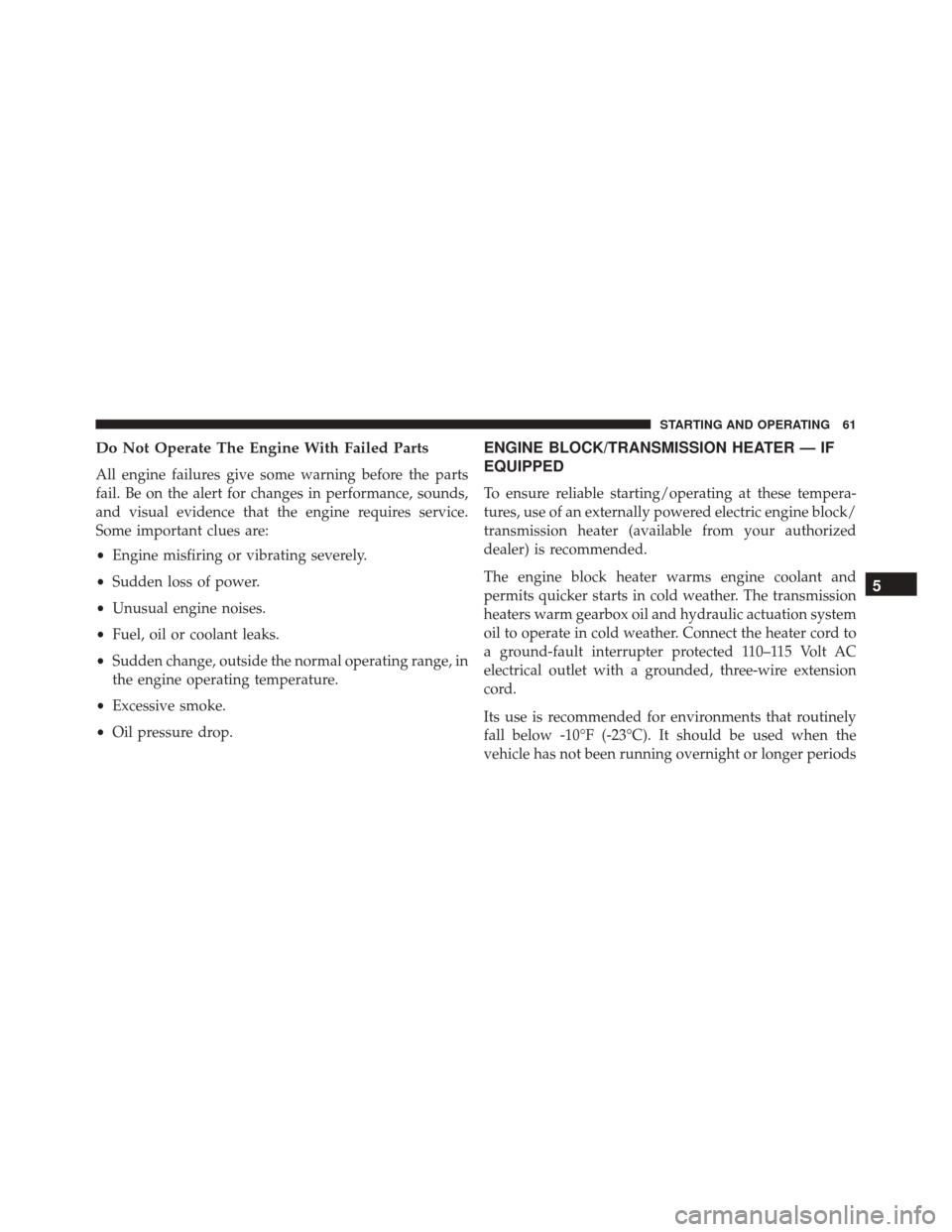
Do Not Operate The Engine With Failed Parts
All engine failures give some warning before the parts
fail. Be on the alert for changes in performance, sounds,
and visual evidence that the engine requires service.
Some important clues are:
•Engine misfiring or vibrating severely.
• Sudden loss of power.
• Unusual engine noises.
• Fuel, oil or coolant leaks.
• Sudden change, outside the normal operating range, in
the engine operating temperature.
• Excessive smoke.
• Oil pressure drop.
ENGINE BLOCK/TRANSMISSION HEATER — IF
EQUIPPED
To ensure reliable starting/operating at these tempera-
tures, use of an externally powered electric engine block/
transmission heater (available from your authorized
dealer) is recommended.
The engine block heater warms engine coolant and
permits quicker starts in cold weather. The transmission
heaters warm gearbox oil and hydraulic actuation system
oil to operate in cold weather. Connect the heater cord to
a ground-fault interrupter protected 110–115 Volt AC
electrical outlet with a grounded, three-wire extension
cord.
Its use is recommended for environments that routinely
fall below -10°F (-23°C). It should be used when the
vehicle has not been running overnight or longer periods
5
STARTING AND OPERATING 61
Page 64 of 145
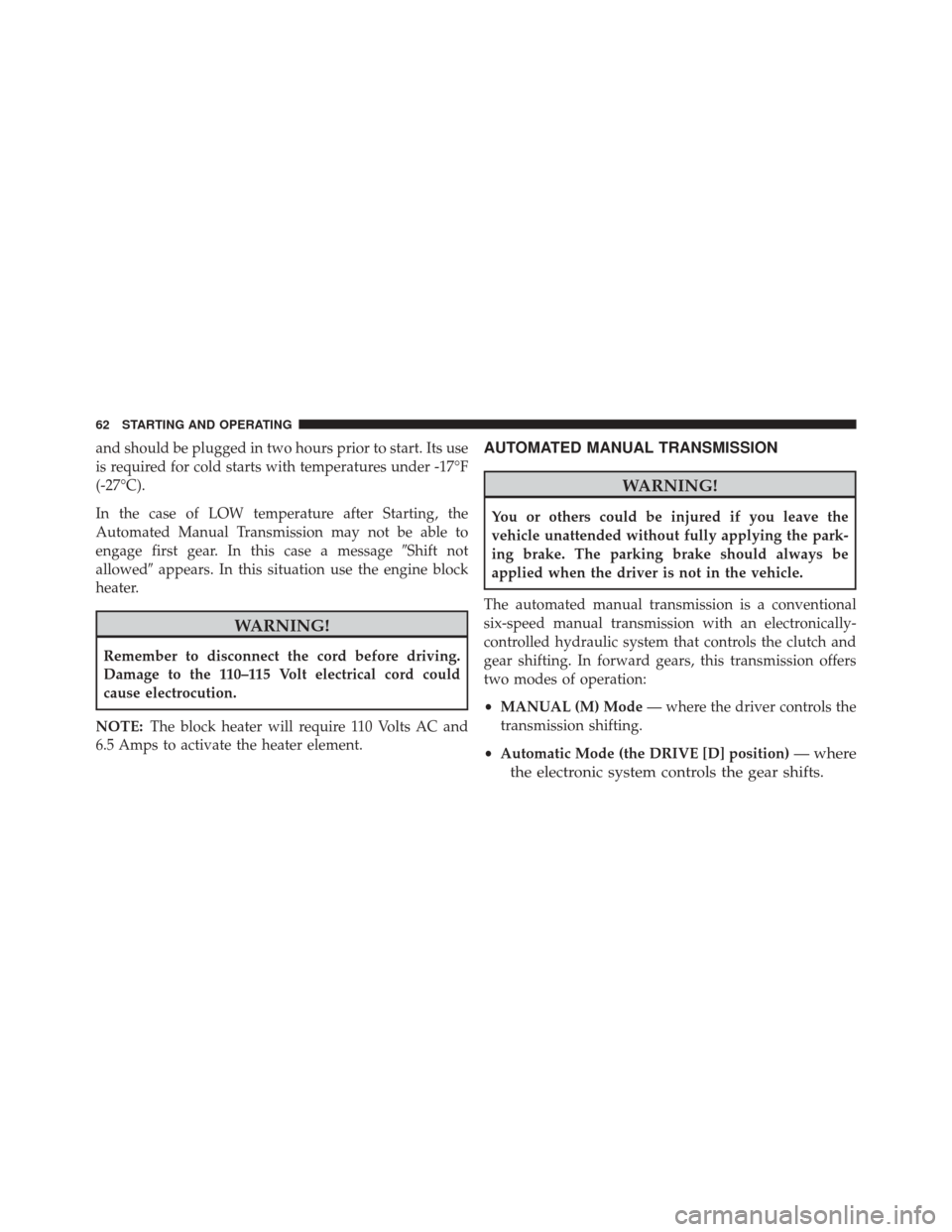
and should be plugged in two hours prior to start. Its use
is required for cold starts with temperatures under -17°F
(-27°C).
In the case of LOW temperature after Starting, the
Automated Manual Transmission may not be able to
engage first gear. In this case a message�Shift not
allowed� appears. In this situation use the engine block
heater.
WARNING!
Remember to disconnect the cord before driving.
Damage to the 110–115 Volt electrical cord could
cause electrocution.
NOTE: The block heater will require 110 Volts AC and
6.5 Amps to activate the heater element.
AUTOMATED MANUAL TRANSMISSION
WARNING!
You or others could be injured if you leave the
vehicle unattended without fully applying the park-
ing brake. The parking brake should always be
applied when the driver is not in the vehicle.
The automated manual transmission is a conventional
six-speed manual transmission with an electronically-
controlled hydraulic system that controls the clutch and
gear shifting. In forward gears, this transmission offers
two modes of operation:
• MANUAL (M) Mode — where the driver controls the
transmission shifting.
• Automatic Mode (the DRIVE [D] position)
— where
the electronic system controls the gear shifts.
62 STARTING AND OPERATING
 1
1 2
2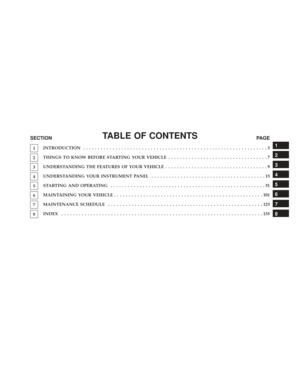 3
3 4
4 5
5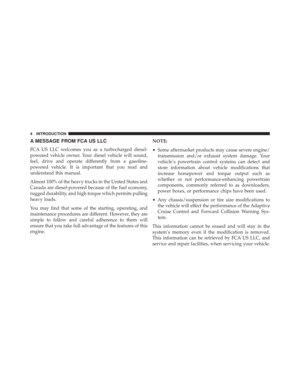 6
6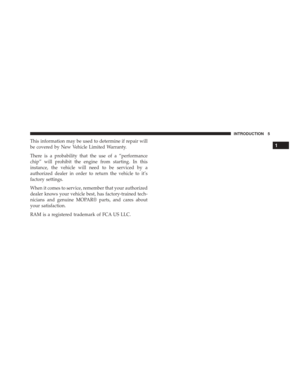 7
7 8
8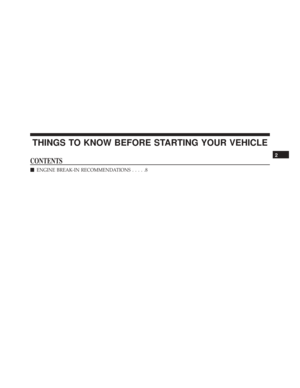 9
9 10
10 11
11 12
12 13
13 14
14 15
15 16
16 17
17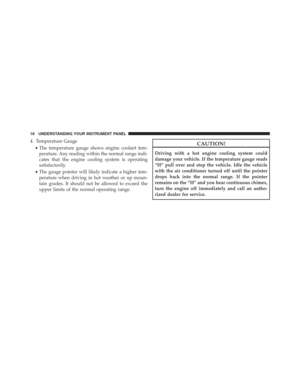 18
18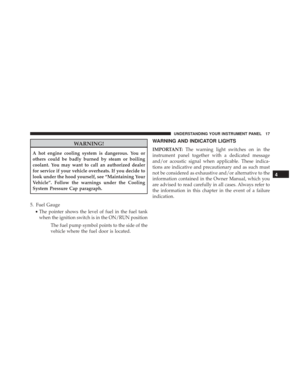 19
19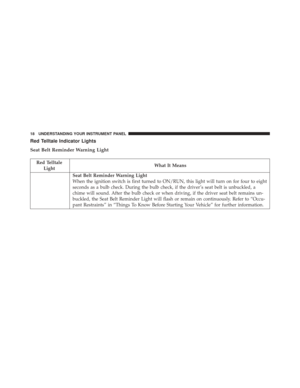 20
20 21
21 22
22 23
23 24
24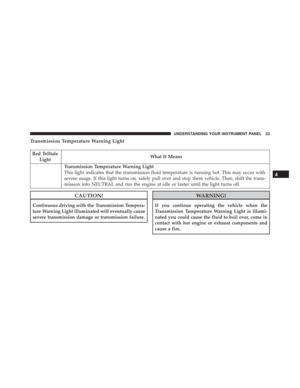 25
25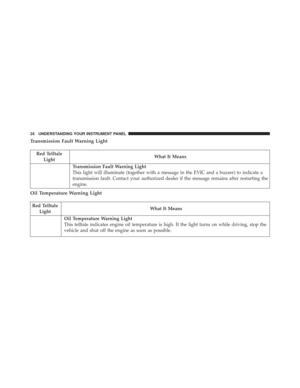 26
26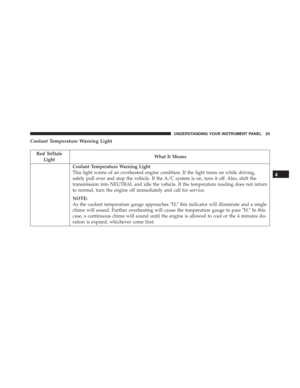 27
27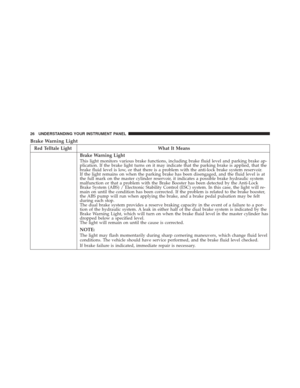 28
28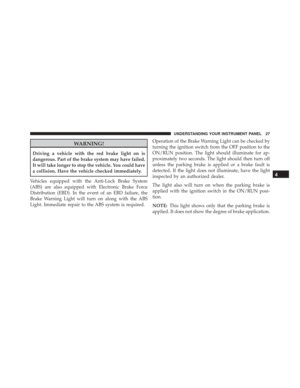 29
29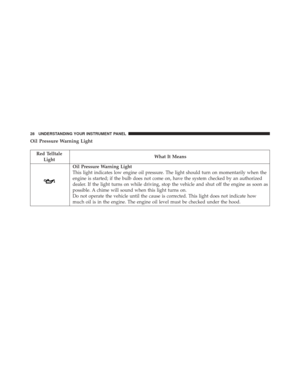 30
30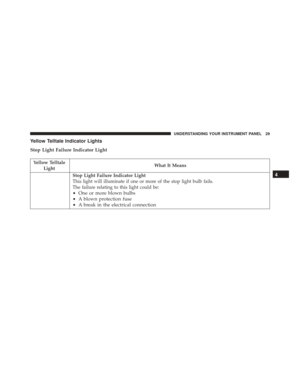 31
31 32
32 33
33 34
34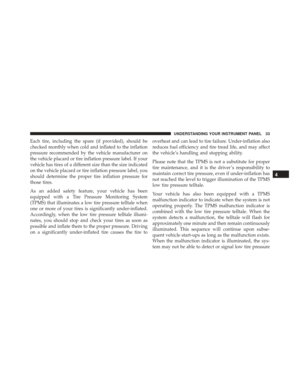 35
35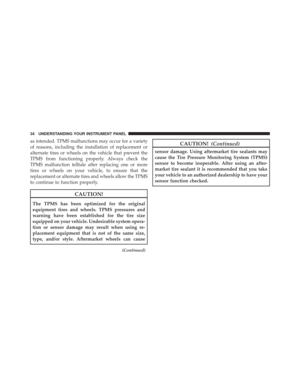 36
36 37
37 38
38 39
39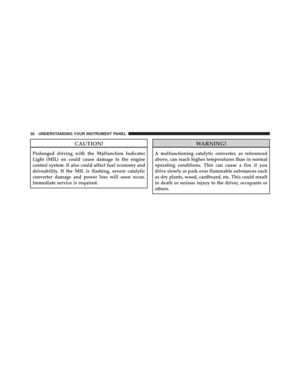 40
40 41
41 42
42 43
43 44
44 45
45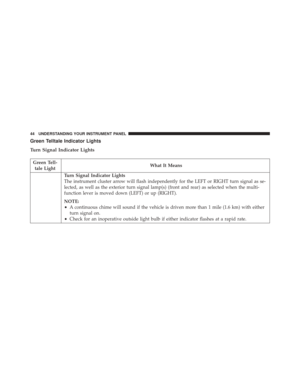 46
46 47
47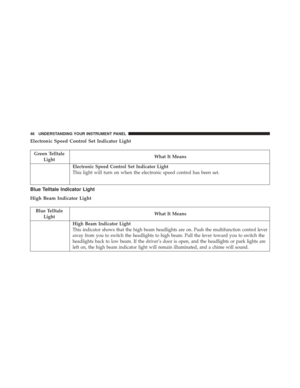 48
48 49
49 50
50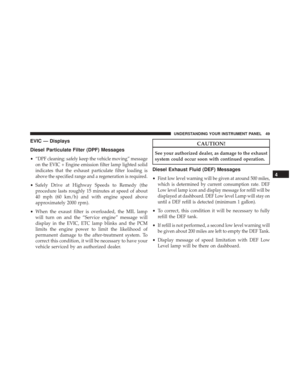 51
51 52
52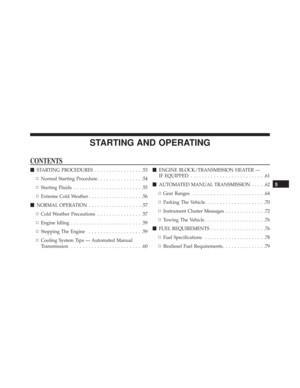 53
53 54
54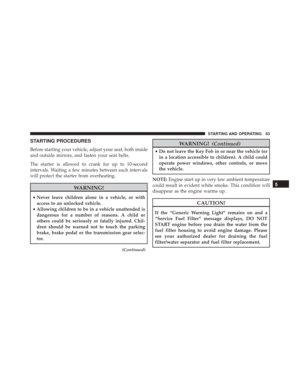 55
55 56
56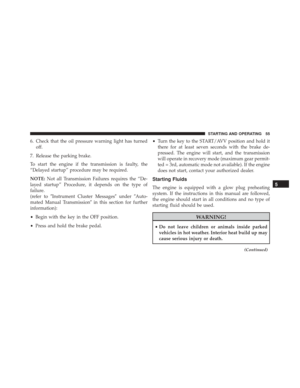 57
57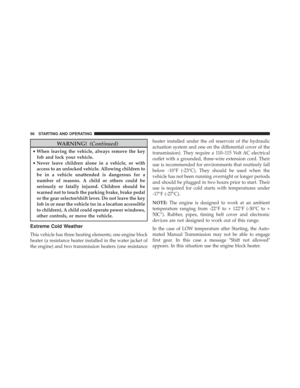 58
58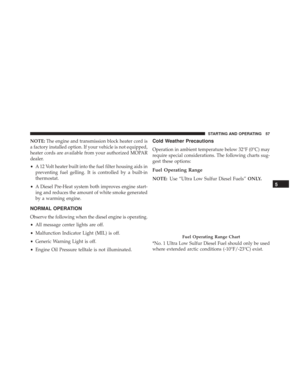 59
59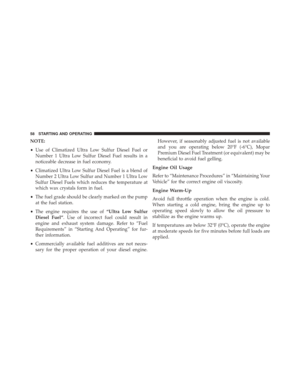 60
60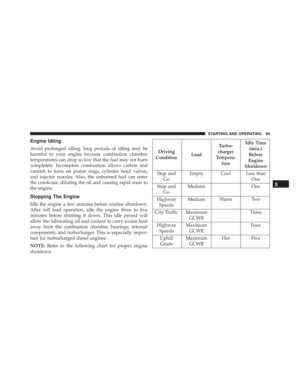 61
61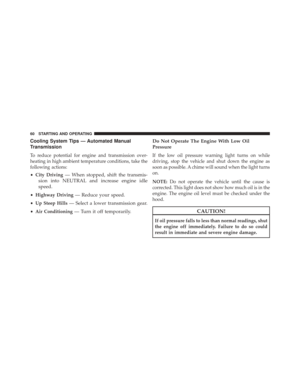 62
62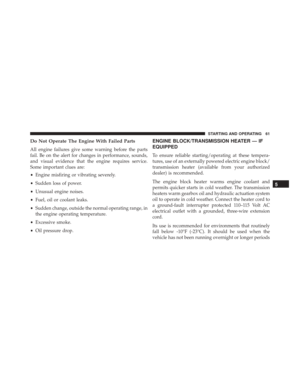 63
63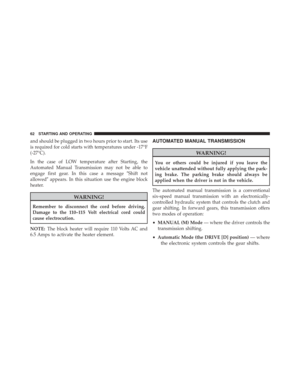 64
64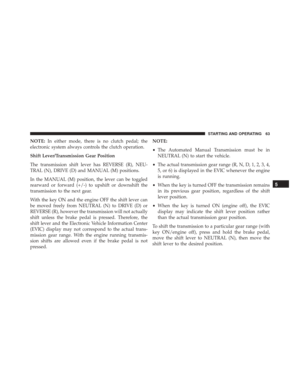 65
65 66
66 67
67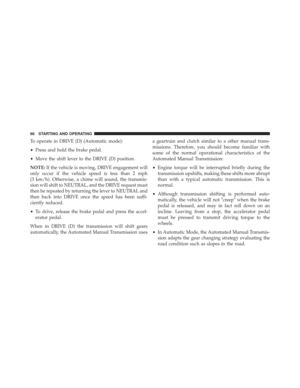 68
68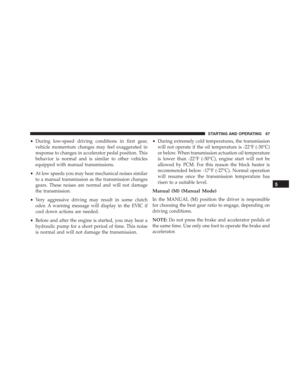 69
69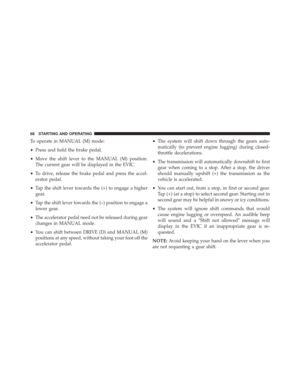 70
70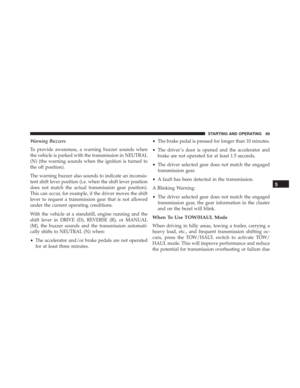 71
71 72
72 73
73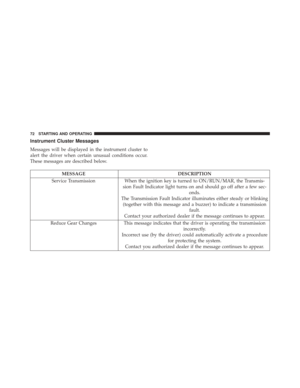 74
74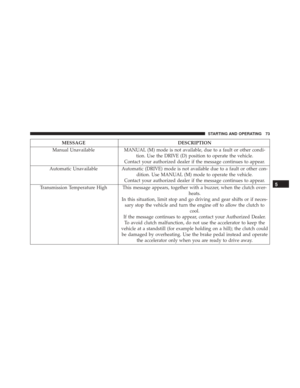 75
75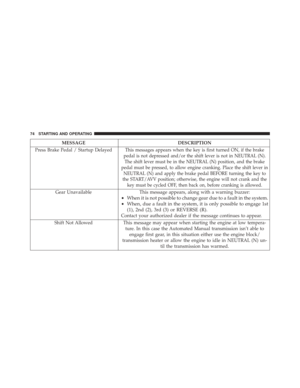 76
76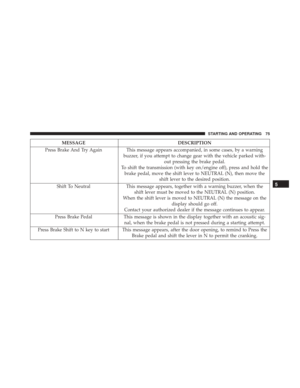 77
77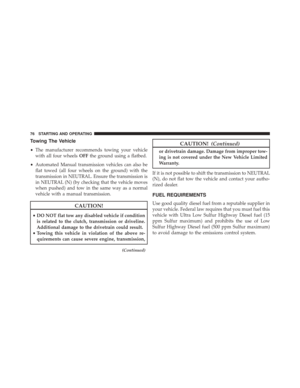 78
78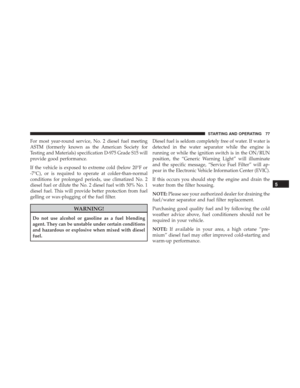 79
79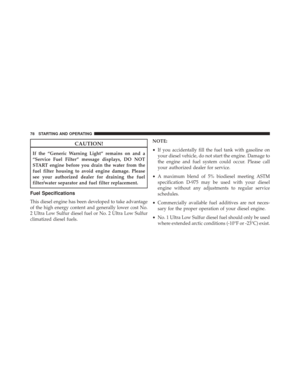 80
80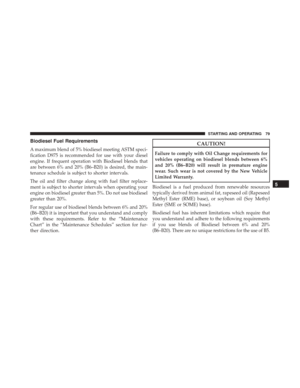 81
81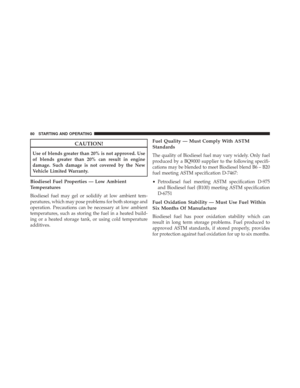 82
82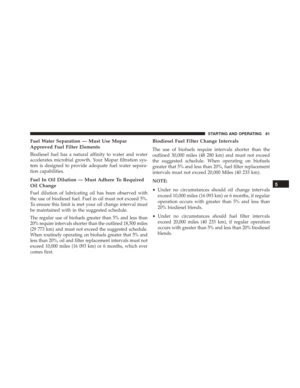 83
83 84
84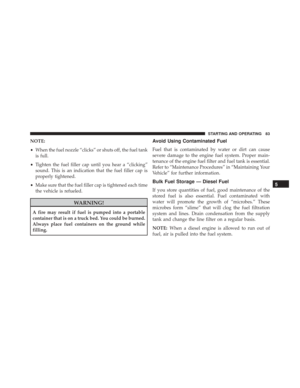 85
85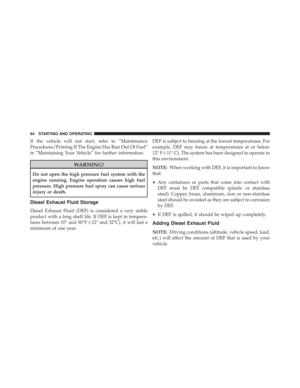 86
86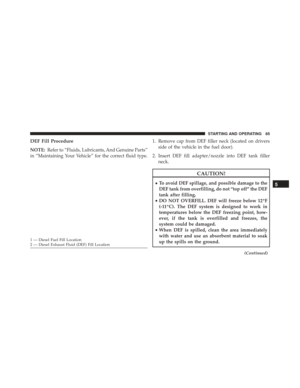 87
87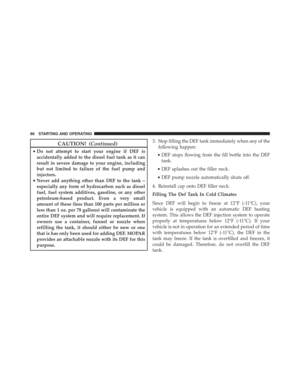 88
88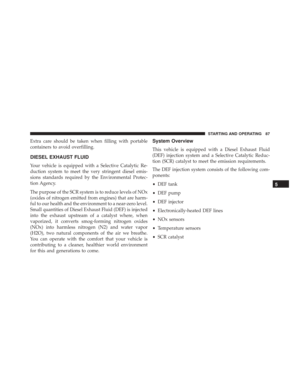 89
89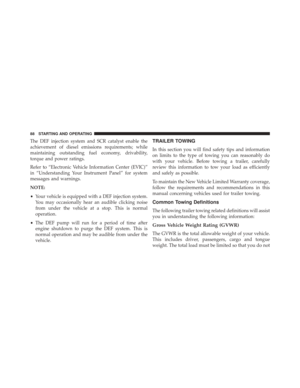 90
90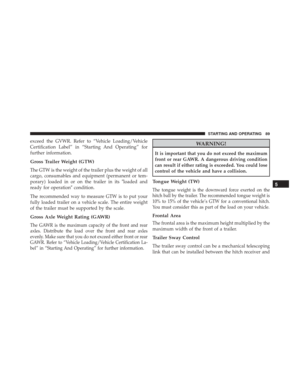 91
91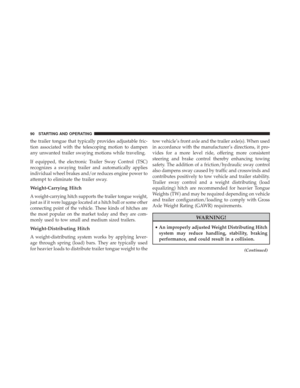 92
92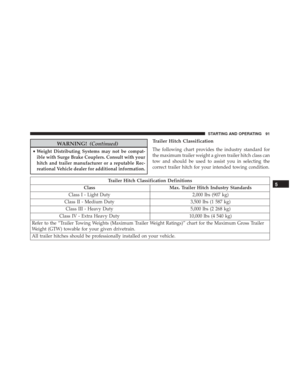 93
93 94
94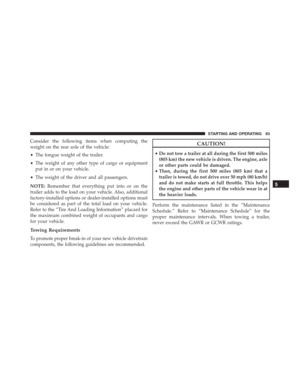 95
95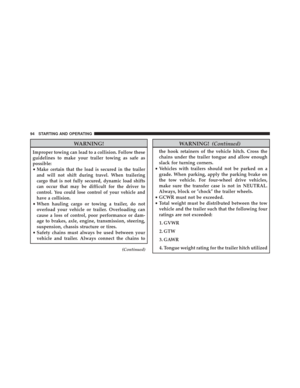 96
96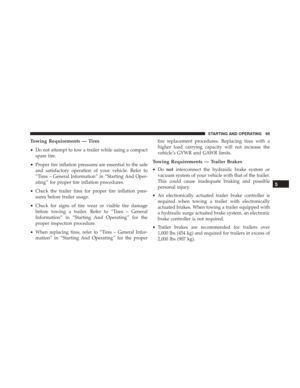 97
97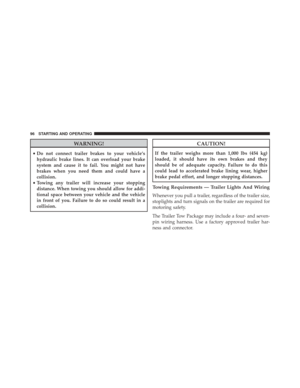 98
98 99
99 100
100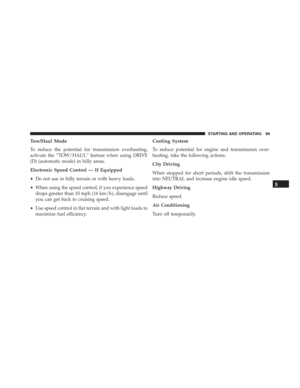 101
101 102
102 103
103 104
104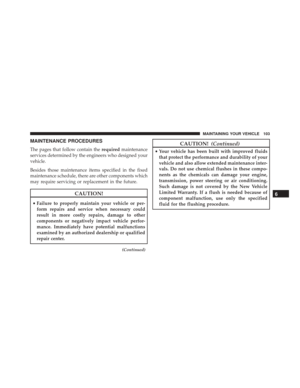 105
105 106
106 107
107 108
108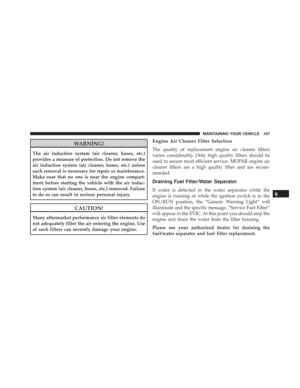 109
109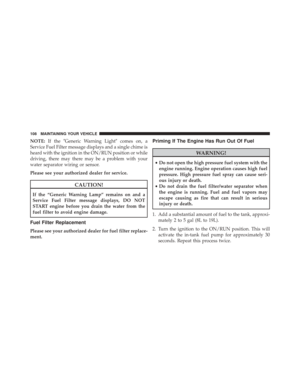 110
110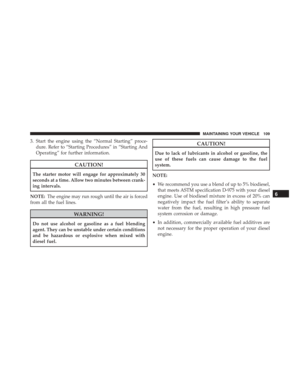 111
111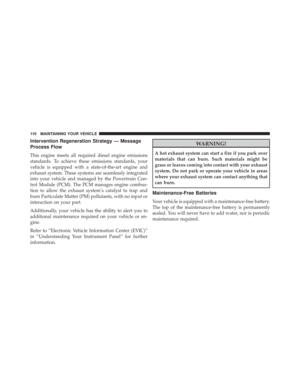 112
112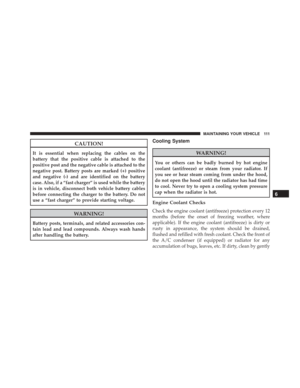 113
113 114
114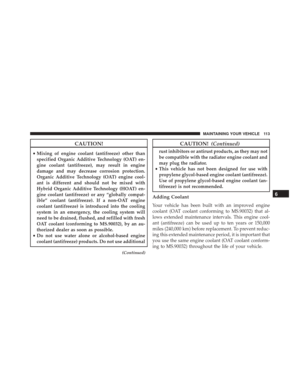 115
115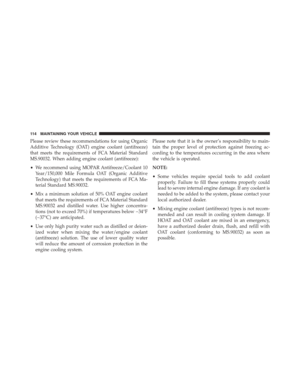 116
116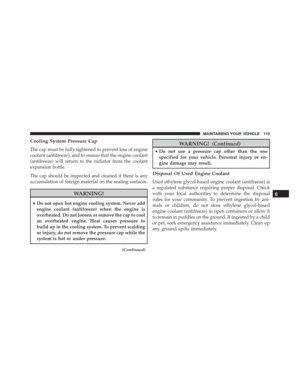 117
117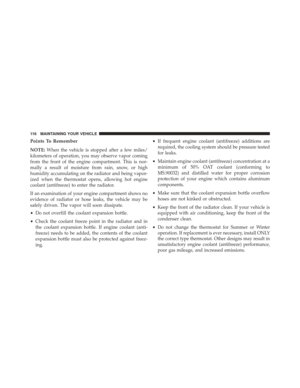 118
118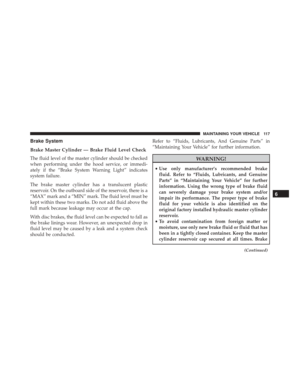 119
119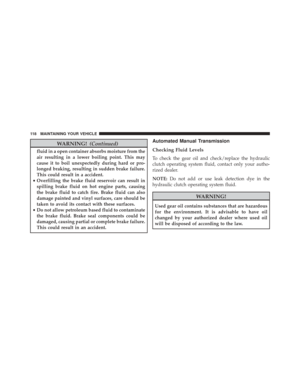 120
120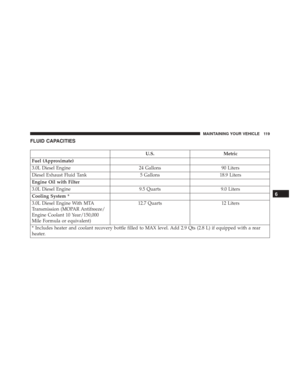 121
121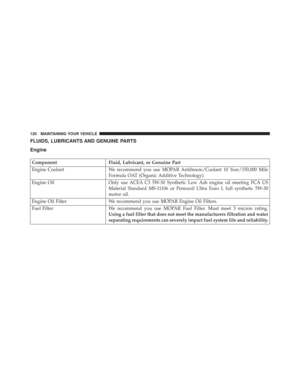 122
122 123
123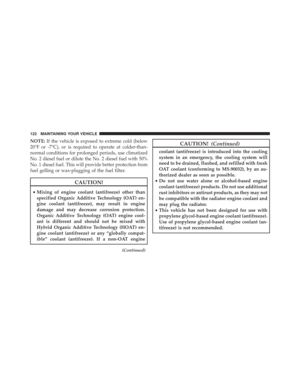 124
124 125
125 126
126 127
127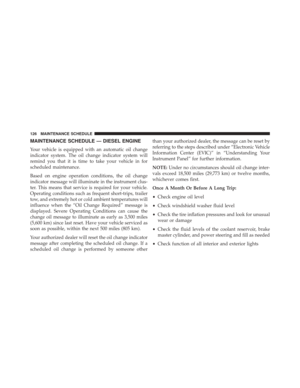 128
128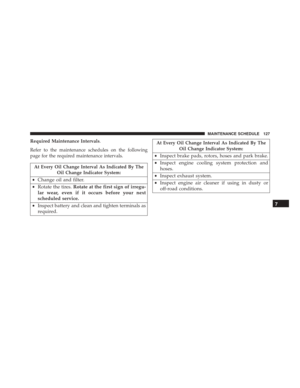 129
129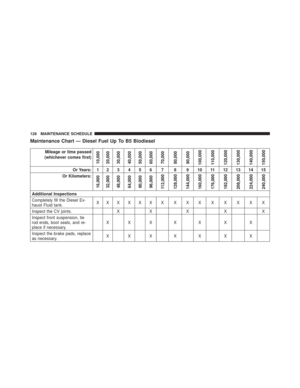 130
130 131
131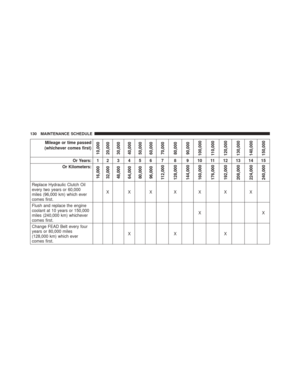 132
132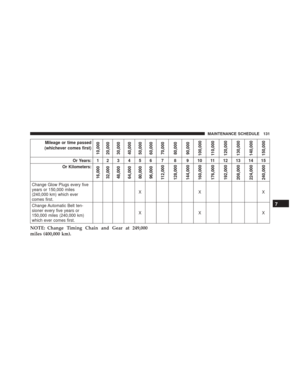 133
133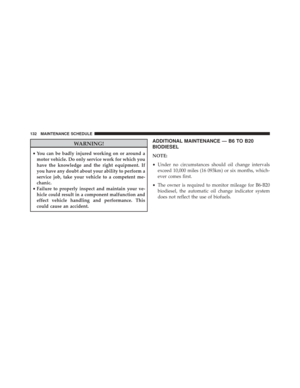 134
134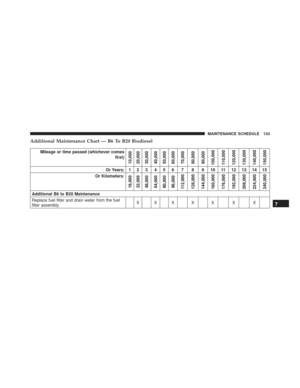 135
135 136
136 137
137 138
138 139
139 140
140 141
141 142
142 143
143 144
144






